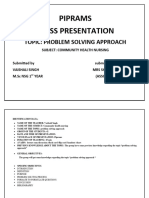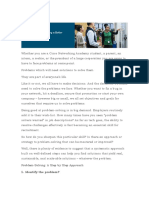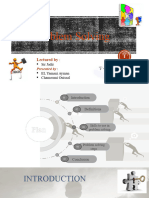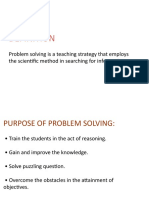0% found this document useful (0 votes)
17 views1 pageWhat Is Problem
Problem-solving is the process of identifying and addressing challenges through critical thinking and creativity. It involves steps such as problem identification, analysis, solution generation, evaluation, implementation, and assessment. Various approaches include logical, creative, trial and error, and collaborative problem-solving, which are essential for effective decision-making and adaptability in personal and professional contexts.
Uploaded by
MARISSA MARREROCopyright
© © All Rights Reserved
We take content rights seriously. If you suspect this is your content, claim it here.
Available Formats
Download as DOCX, PDF, TXT or read online on Scribd
0% found this document useful (0 votes)
17 views1 pageWhat Is Problem
Problem-solving is the process of identifying and addressing challenges through critical thinking and creativity. It involves steps such as problem identification, analysis, solution generation, evaluation, implementation, and assessment. Various approaches include logical, creative, trial and error, and collaborative problem-solving, which are essential for effective decision-making and adaptability in personal and professional contexts.
Uploaded by
MARISSA MARREROCopyright
© © All Rights Reserved
We take content rights seriously. If you suspect this is your content, claim it here.
Available Formats
Download as DOCX, PDF, TXT or read online on Scribd
/ 1































































